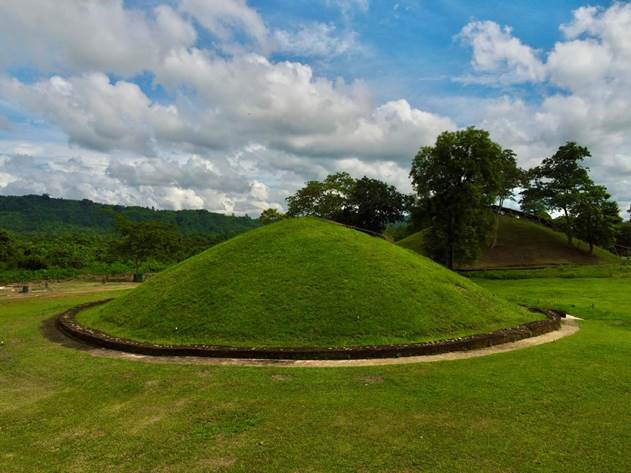Ishita Malakar, Pune
The Ahom Dynasty (1228-1826) Burial Mounds which were called the Moi dams and located in the Charaideo district of eastern Assam, also very often compared with the Royal graves of ancient China and the pyramids of Egypt have been listed under the UNESCO World Heritage Sites list.
Under the cultural sites category the burials that portrayed the practices of the Tai-Ahom community were India’s first official nomination for the UNESCO World Heritage Site tag. On the 43rd meeting of the World Heritage meeting which was held in New Delhi, the Moi dams were given this world recognition. It became the 43rd World Heritage Site in India and third in Assam.
These burial mounds are located at the foothills of the Patkai Ranges in Eastern Assam and are considered sacred among the Tai-Ahom communities and portray their age-long funerary practices. Arriving in Assam in the 13th century, the Tai-Ahom people established Charaideo as their first capital and the site of the royal necropolis. So, this community of people kept creating these burial mounds which they called Moi dams or “home-of-the-spirit” with the help of natural resources available on earth like hills, forests and water all along 600 years of the annexation of Assam from 1228 to 1826 when the Treaty of Yandabo was signed.
Mr. Gajendra Singh, who is the Union Minister of Culture and Tourism has mentioned that this recognition brings allround global attention to Assam and also highlights its rich cultural heritage by acknowledging this 700-year-old mound burial system of the kings of Ahom in Charaideo. Even Prime Minister Narendra Modi posted on X, mentioning the immense pride and joy he feels for India with this recognition.
The Moi dams are double-storied platforms which have to be entered through an arched passage. On top of the hemispherical mounds made of mounds, bricks are also laid. There is also an arched gateway on the west through which one can enter. Each chamber has an elevated platform where the bodies are laid. So the entirety of the area portrays a royal burial landscape only visible at Moi dams, as was also declared by UNESCO on their website.
